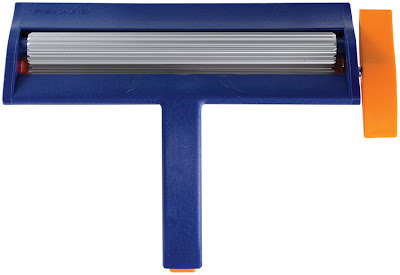@John C. - Plate presses have similar issues to the design Dave is proposing. As the metal forms in the valleys of the die it begins to lock the position in each valley and for the metal to continue to form it must stretch to create the shape. Considering aluminum can stock is typically around .006 there isn’t much material to stretch. Combine that with the work hardened condition of aluminum can stock and somewhere the material will fail.
@John B - You are correct that a good guillotine paper cutter is an asset, but I would prefer to experiment with the width of the sheet until I got the finished width I was looking for. Cutting to size after forming requires a second pass through the crimper to repair the damage done during the sizing step. I hadn’t thought of aluminum shim stock, but would suggest making sure it is in non annealed condition when purchased. Any suggestions where you got yours?
@David M - Sweet little shanty, looks great. The issue with the Fiskars is the depth of the corrugation vs the pitch. I can’t find my catalog with dimensions so I am going from memory but real world corrugated metal is usually something in the 7/8 to 1 1/4 high range with the pitch of the corrugations something in the 2 -3 inch range. I haven’t measured mine to determine the scaled dimensions, but it doesn’t take calibrated eyeballs to see the excessive depth the Fiskars produces. Does it really matter? The overall effect the Fiskars produces is probably more visually appealing in that should one actually make scale corrugated the corrugations would get visually lost at ten feet.
@Bob - I have a copy of Yogi’s design and you would need both a lathe and mill to properly produce his machine. From memory the only part that requires a lathe is the modified gear for the handle to attach to. The bearing cuts should be done on a mill and bolt assembly holes would be either the mill or a drill press. If any of the assembly holes were counter sunk or counter bored (can’t remember) then the mill would be the way to go. Without some gear specific tools, yes the indexing would be a bit on the difficult side.
I have read a bunch of threads on this subject would only comment that from my experimenting with my Fiskars, I would recommend annealing the aluminum can stock prior to use. Drawing the aluminum in the forming process of the can work hardens it making it much harder to form with the Fiskars. Some have reported multiple passes through the crimper does the trick. I look at the construction of the crimper and feel that the plastic housing will fail over time overworking it with non annealed material. John B suggest another source, if you wish to buy your material, of aluminum shim stock. I hadn’t thought of that, but would suggest making sure it is in non annealed condition when purchased.
@Dave T - You beat my post 




